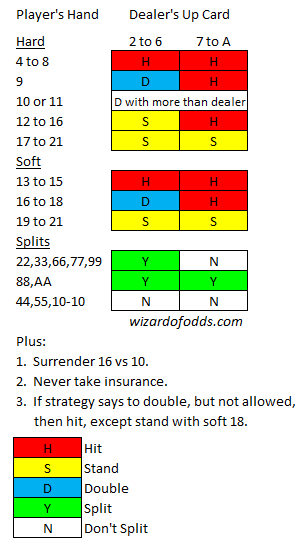I wrote a Blackjack-playing program in Java that would play by the "simple strategy" no matter what (simplified even further by only hitting or standing).
Note: the automated dealer followed normal Vegas rules, had to hit on 16 or below and on soft 17's, and blackjack paid 3:2. More information on Blackjack rules can be found here.
The program never makes mistakes, never gets fatigued, and always follows the strategy. I started the computer "player" off with $1,000, had it play 100,000 hands, betting $1 on each hand, and after all that, it finished in the black, up +$151. That's only a 0.151% return for 100,000 hands of play.
What I found the most surprising was how much variance there was in the player's performance: its net loss fell as low as -$127, and its net gain got as high as +$177. The House can always withstand these large runs; however, players with small bankrolls can not. Also, about half of the time the computer player was in the red. I plotted every 1,000 hands to illustrate this variability:

No comments:
Post a Comment